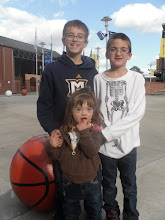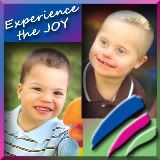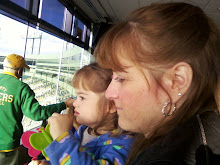Here is the next part. If you haven't read the beginning, here are the links - photo 1, photo 2, photo 3, and photo 4.
Part 5:
The next section in the scrapbook comes from my undergraduate college years. We see photos showing different, new experiences which expand my experiences and understanding of diversity. Having come from a pretty homogeneous background, I finally met new people who had different backgrounds and experiences. Little did I know that this would later impact me with Quinn, for disability is just another area of diversity, just like race, gender, age, and sexual orientation. In college I learn about special education law – that children ages 3-21 with disabilities are entitled to a free, appropriate education in the least restrictive environment. I in a cognitive sense understood that concept and set out to witness it firsthand in my fieldwork experience in education. This experience involved spending time in the special educational programs at a local high school. Unfortunately what I saw in my own personal experiences in middle and high school were apparent there – seclusion, limited contact with other students, and stigma. I was intrigued by the children in these programs, but my heart also felt some pain and I realized that I didn’t fully emotionally understand the experience that I was witnessing. I wanted to distance myself. How could I fully understand this? I was just an outsider and had the belief that parenting a child like this would bring only pain. Today I have a better understanding of the parenting piece, and I hope today things are different when it comes to the educational piece, for 15 years have passed since that experience. I think, though, that I see something in this photo now – I see the unfortunate difference between policy and reality. It is one thing to talk about the rights of individuals with disabilities and cite law while sitting in the classroom or removed from the experience – but it is entirely something different to witness the acceptance and inclusion in the eyes and hearts of students and faculty when it comes to how they look at your child. I hope I get to witness this for Quinn. I hope that when I look into the eyes of her classmates and teachers that I see love and acceptance. I hope that the school values her and learns from her as much as I have. And I hope that any fieldwork students in education who happen to be in her school can clearly see something different that I did not see when I was there.
-Karyn
What day is it, even?
4 years ago


















No comments:
Post a Comment